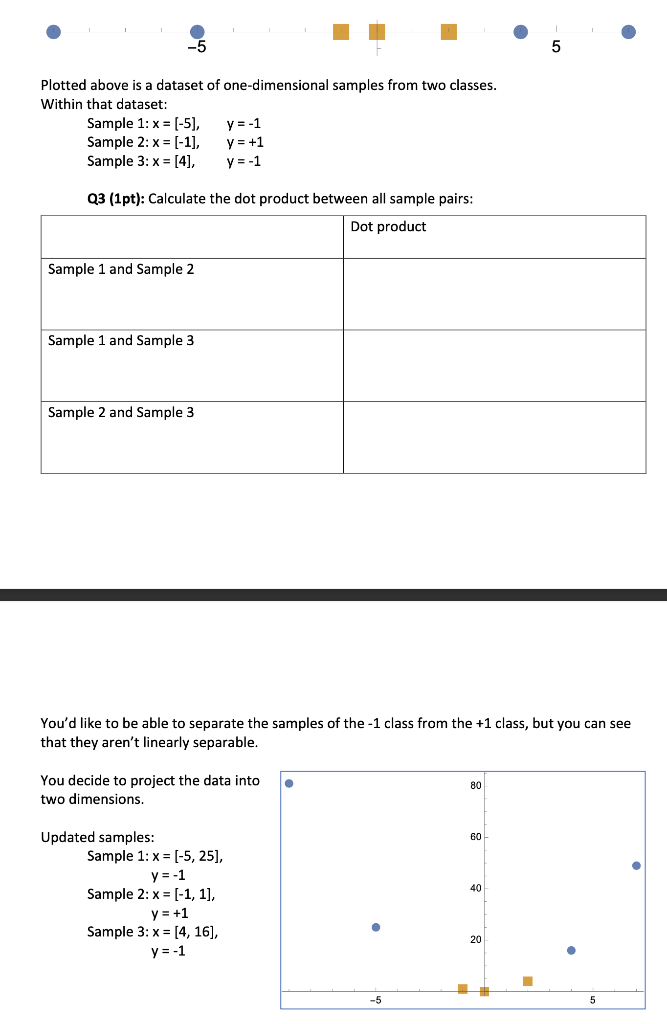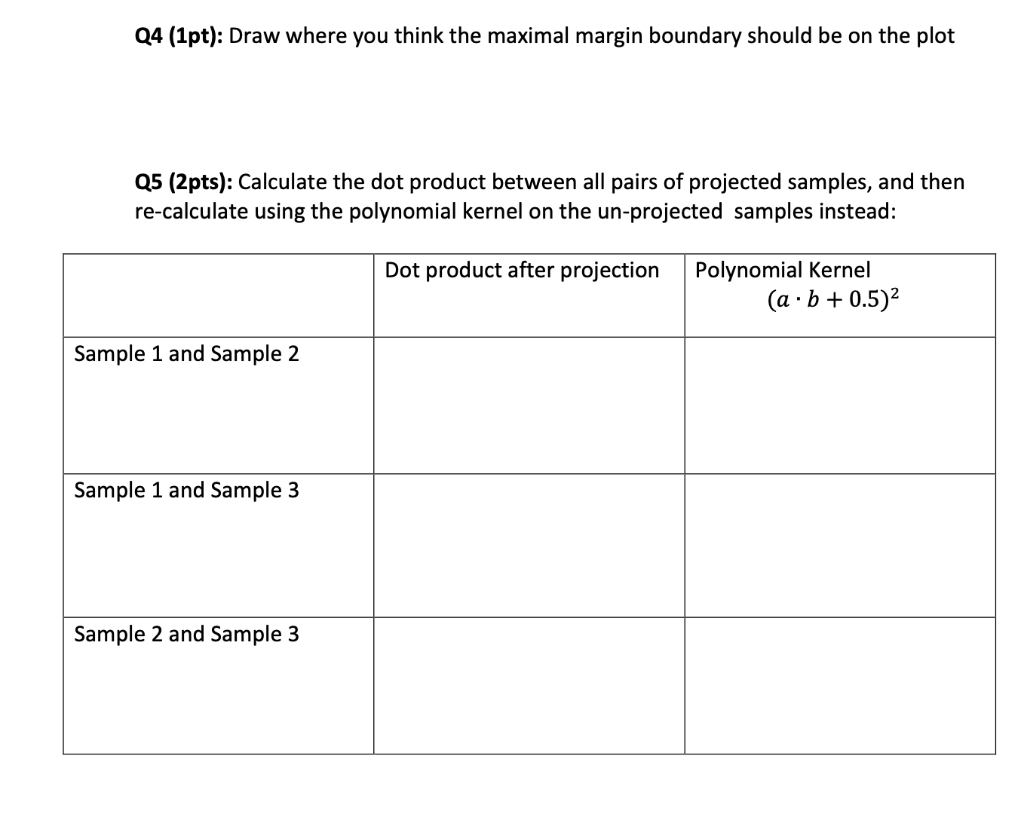Answered step by step
Verified Expert Solution
Question
1 Approved Answer
Plotted above is a dataset of one-dimensional samples from two classes. Within that dataset: Sample 1: x=[5],y=1 Sample 2: x=[1],y=+1 Sample 3: x=[4],y=1 Q3 (1pt):


Step by Step Solution
There are 3 Steps involved in it
Step: 1

Get Instant Access to Expert-Tailored Solutions
See step-by-step solutions with expert insights and AI powered tools for academic success
Step: 2

Step: 3

Ace Your Homework with AI
Get the answers you need in no time with our AI-driven, step-by-step assistance
Get Started


